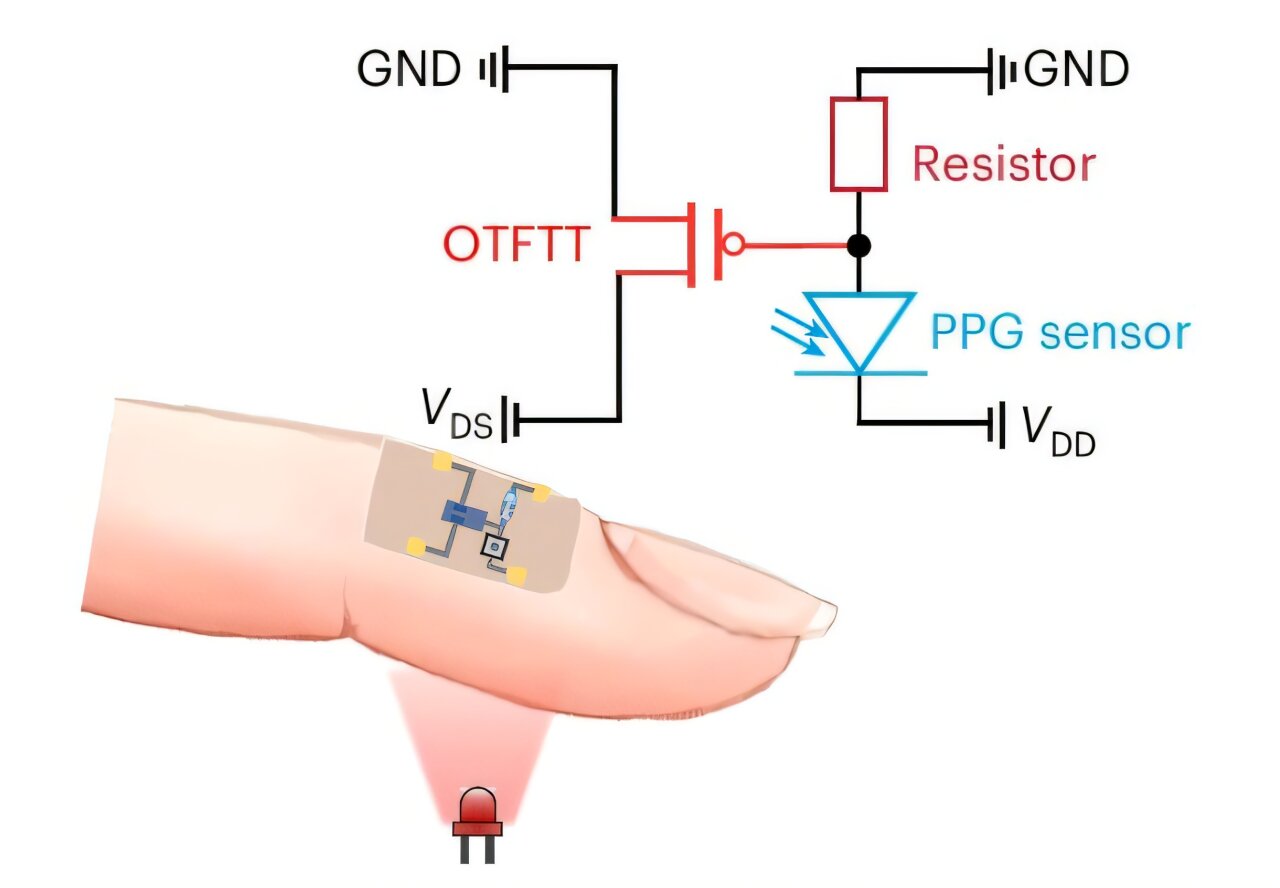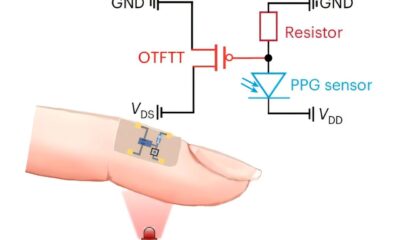Tech
Tragedy has struck Lisbon’s funicular railway. Transport expert explains how these old-fashioned trains work

Some 15 people have died after the Gloria funicular railway car in Lisbon, Portugal, derailed and crashed on Wednesday local time.
Emergency services have also confirmed that more than 18 people were also injured, five of them seriously, in the tragedy, which occurred at the start of the evening rush hour.
It follows another accident on the same line in May 2018, when one of the cars derailed due to flaws in the maintenance of its wheels. No one was killed in that incident.
The exact cause of the most recent accident is not yet known. Witnesses have reported that the yellow-and-white tram appeared out of control as it sped downhill, before derailing as it rounded a bend and crashing into a building. Photos of the aftermath show a crumpled heap of cables and steel.
These cable car–like transport systems are rare relics of the 19th century, found in only a few very hilly places around the world. So how do they work? And why are they still in use?
How do funicular railways work?
Trains and trams typically only work on flat terrain. That’s because their steel wheels can’t get enough traction on steel rails on steep hills. As a workaround, railroad engineers often build tunnels through steep mountainsides.
Funicular railways, however, can go up very steep hills.
They usually feature two counterbalanced cars that are attached via a haulage cable.
As one car descends, it helps pull the ascending car up the hillside. The weight of the ascending car also prevents the descending one from careening out of control. Some now have electric motors to help power them and some are able to engage a one-way mechanical drive just for steep hills.
Even though funicular systems are typically quite slow and clunky, they are still popular with both tourists and residents in the places where they’re found.
Where are they found?
The Gloria funicular railway line in Lisbon opened in 1885. One of three funicular lines in Lisbon, it connects the city’s downtown area with the Bairro Alto (Upper Quarter).
But there are other examples of these transport relics around the world.
Switzerland has several funicular railways. The most notable is the Stoosbahn—the steepest funicular in the world. It covers a total ascent of around 744 meters, reaching a gradient of 47 degrees. It is a very popular tourist trip.
In Hong Kong, the Peak Tram is a funicular railway that has operated since 1888 and takes people to near the top of Hong Kong Island.
Last year, there was also some discussion about installing a new funicular railway system in the Blue Mountains in New South Wales, Australia, that would travel 14 meters every second.
The rise of trackless trams
Funicular railways still serve a purpose for people living in—or visiting—steep areas where they’re found. However, newer technology means more conventional forms of rail transport are now far less limited in traveling up and down hills.
For example, trackless trams are kind of a combination between a tram and a bus. They use GPS and digital sensors to move precisely along an invisible track and have rubber wheels, enabling them to ascend gradients of up to 15%. However, these have not yet been built for steeper hills.
I have enjoyed riding such funicular trams in a range of hilly cities, but this crash is likely to take the shine off the tourist experience. It’s about time we had a 21st-century option that is clearly safer.
This article is republished from The Conversation under a Creative Commons license. Read the original article.![]()
Citation:
Tragedy has struck Lisbon’s funicular railway. Transport expert explains how these old-fashioned trains work (2025, September 4)
retrieved 4 September 2025
from https://techxplore.com/news/2025-09-tragedy-struck-lisbon-funicular-railway.html
This document is subject to copyright. Apart from any fair dealing for the purpose of private study or research, no
part may be reproduced without the written permission. The content is provided for information purposes only.
Tech
Sorry, Your Friend Is Now an Annoying Rock Jock. Here’s What to Get Them

Here’s what to get for your friend with the fiddly little fingers and stinky feet.
Source link
Tech
New organic thin-film tunnel transistors for wearable and other small electronics

To meet the growing demands of flexible and wearable electronic systems, such as smart watches and biomedical sensors, electronics engineers are seeking high-performance transistors that can efficiently modulate electrical current while maintaining mechanical flexibility.
Thin-film transistors (TFTs), which are comprised of thin layers of conducting, semiconducting and insulating materials, have proved to be particularly promising for large-area flexible and wearable electronics, while also enabling the creation of thinner displays and advanced sensors.
Despite their potential, the energy-efficiency with which these transistors can switch electrical current has proved difficult to improve. This is due to the so-called thermionic limit, a theoretical threshold that delineates the lowest possible voltage required for a transistor to boost electrical current by a factor of 10 at room temperature when switching between “off” and “on” states.
Researchers at Soochow University and other institutes have developed a new TFT based on organic materials that could bypass this limitation, as it operates below the thermionic limit. The transistor, introduced in a paper published in Nature Electronics, was found to amplify signals with remarkable efficiency.
“Our work was driven by a fundamental challenge in wearable electronics and Internet of Things (IoT): the pursuit of high-performance devices with ultra-low-power consumption,” Jiansheng Jie, senior author of the paper, told Tech Xplore.
“Conventional organic thin-film transistors (OTFTs) are inherently limited by the thermionic emission mechanism, which sets a theoretical minimum for the subthreshold swing (SS)—a key metric that determines how efficiently a transistor can switch—of 60 mV dec-1 at room temperature. This inherent limitation results in excessive power dissipation during switching operations, posing a major barrier to energy-efficient operation.”
This recent study builds on recent works that highlighted the promise of so-called tunnel field-effect transistors (TFETs) based on inorganic semiconductors. These transistors were found to overcome the limitations of conventional transistors, leveraging a quantum mechanical process known as band-to-band tunneling.
“We sought to translate these advantages into the field of organic electronics,” said Jie. “Our central objective was to develop organic thin-film tunnel transistors (OTFTTs) capable of sub-60 mV dec-1 performance, thereby breaking the fundamental thermionic limit that has long governed conventional OTFTs.
“By demonstrating such behavior in a solution-processable, flexible organic platform, our research addresses a critical gap in the technological evolution of organic electronics and paves the way toward low-voltage, highly efficient flexible circuits for next-generation wearable and IoT applications.”
The new OTFTT developed by the researchers replaces the thermionic injection mechanism that drives the operation of conventional TFTs with band-to-band tunneling. This process allows charge carriers to pass through the energy barrier directly and at extremely low voltages, significantly boosting the devices’ switching efficiency.
“The key innovation lies in the design of a hybrid inorganic-organic source-channel heterojunction,” explained Jie.
“We combined molybdenum trioxide (MoO3), an inorganic metal oxide with a deep-conduction-band, with the 2,7-dioctyl[1]-benzothieno[3,2-b][1]benzothiophene (C8-BTBT) single-crystalline thin film, which has a relatively low highest occupied molecular orbital (HOMO) energy level. This creates a ‘broken-gap’ alignment, where the HOMO of C8-BTBT lies above the conduction band (CB) of MoO3.”

The configuration of the team’s transistor prompts the thermally excited tail of carriers originating from the MoO3 source to be sharply truncated. This in turn effectively suppresses classical thermionic emission processes, making band-to-band tunneling the dominant carrier injection mechanism.
“Meanwhile, by introducing a molecular decoupling layer (BPE-PDCTI) at the heterojunction interface, the Fermi-level pinning effect was effectively alleviated and the tunneling barrier height was further reduced,” said Jie.
“This strategic design enables the device to trigger charge band-to-band tunneling at an extremely low supply voltage. As a result, our OTFTTs overcame the 60 mV dec-1 thermionic limit on SS, achieving the lowest SS of 24.2 ± 5.6 mV dec-1 among the existing thin-film transistor technologies, alongside the record-high signal amplification efficiency of 101.2 ± 28.3 S A-1.”
The ultra-low SS yielded by the newly developed transistor is highly favorable for the development of low-power signal amplification circuits. In initial tests, circuits based on the transistor were found to achieve a gain in amplification of over 537 V V−1 at an ultra-low power consumption below 0.8 nW.
“Our OTFTTs break the fundamental thermionic limit—a long-standing theoretical ceiling on SS (60 mV dec⁻¹ at room temperature) that has constrained the energy efficiency of conventional thin-film transistors for decades,” said Jie.
“This breakthrough not only redefines the performance boundaries of organic electronics but also enables a new class of ultra-low-power devices. The practical implications are substantial. Our OTFTTs are ideally suited for energy-constrained applications such as wearable health monitors, implantable biosensors, and self-powered IoT nodes.”
Notably, the OTFTT developed by Jie and his colleagues is compatible with existing processing and electronics fabrication strategies. In the future, it could be improved further and used to develop a wide range of high precision sensing devices, including trackers for the diagnosis or monitoring of specific medical conditions, environmental sensing systems and neuromorphic (brain-inspired) computing hardware.
“In bridging the gap between the intrinsic physical limitations of organic semiconductors and the stringent efficiency demands of next-generation technologies, this work represents a critical step toward intelligent, pervasive, and environmentally benign electronic systems,” said Jie.
Other researchers could soon build on the team’s design and set out to develop similar OTFTTs. Meanwhile, Jie and his colleagues plan to continue improving their device, for instance, by optimizing its performance via the careful engineering of energy levels at the interface between the organic materials it is based on.
To do this, they will select organic semiconductors with reduced bandgaps and lower carrier effective mass, while also creating high-conductivity interfacial decoupling layers that could enhance the transistor’s tunneling efficiency and performance.
“We will also expand the technology to n-type OTFTTs to enable all-organic tunneling logic circuits, addressing the current gap in low-power organic logic applications,” added Jie.
“Moreover, we plan to deploy OTFTTs in high-precision biomedical signal amplification (e.g., EEG, EMG), ultra-sensitive environmental sensing (e.g., trace gas detection, low-light imaging), and low-power IoT signal processing.
“Finally, we will continue developing scalable integration techniques for the large-scale fabrication of the OTFTTs on flexible substrates, aiming to accelerate the industrial adoption of high-performance, energy-efficient organic electronic systems.”
Written for you by our author Ingrid Fadelli, edited by Sadie Harley, and fact-checked and reviewed by Robert Egan—this article is the result of careful human work. We rely on readers like you to keep independent science journalism alive.
If this reporting matters to you,
please consider a donation (especially monthly).
You’ll get an ad-free account as a thank-you.
More information:
Wei Deng et al, Organic thin-film tunnel transistors, Nature Electronics (2025). DOI: 10.1038/s41928-025-01462-7.
© 2025 Science X Network
Citation:
New organic thin-film tunnel transistors for wearable and other small electronics (2025, October 22)
retrieved 22 October 2025
from https://techxplore.com/news/2025-10-thin-tunnel-transistors-wearable-small.html
This document is subject to copyright. Apart from any fair dealing for the purpose of private study or research, no
part may be reproduced without the written permission. The content is provided for information purposes only.
Tech
Inspired by the EU: Sweden eyes open standard for encrypted chat services | Computer Weekly

Government departments in Sweden are considering deploying “open network” encrypted messaging services as an alternative to proprietary collaboration tools.
Some 40 of Sweden’s government agencies are collaborating on a project that could see them rolling out a secure messaging service across government departments.
The initiative comes as European governments are accelerating the deployment of “sovereign” technologies that allow them to be less reliant on “siloed” software from technology suppliers.
The trend has been given new impetus by the war in Ukraine and growing political upheaval in the US.
A membership organisation for government agencies interested in digital technology, eSam has proposed developing a government messaging service based on Matrix, an open network offering secure decentralised messaging.
Replacing emails and phone calls
Kenneth Edwall, a government employee and member of the eSam working group on the project, told Computer Weekly that one of the aims of the proposal is to make it possible for government departments to communicate more efficiently.
“We as agencies need to collaborate with each other,” he said. “Having email is not the best tool, and having phone calls is not a good method either.”
When eSam first began evaluating collaboration technology in 2021, government departments in Sweden had standardised on Skype for Business as a collaboration tool across government.
The tool was easy to use, and it was possible for government employees to collaborate with colleagues by searching on their email and initiating a chat.
They deployed Skype in a decentralised way, giving agencies the freedom to buy the service from suppliers or deploy it on their own datacentres.
This created a robust, decentralised network, said Edwall. “If you have 100 different deployments of Skype, it’s hard to target them all in a cyber attack,” he added.
Multiple messaging services
Since then, partly as a result of Microsoft phasing out Skype in favour of its Teams software, government departments have taken up a range of incompatible messaging apps. They include Rocket.chat, Teams, Zoom, open source platform Mattermost, video platform Jitsi Meet, and Element.
“We are now seeing at least five or six messaging tools being chosen by authorities today, and if it continues, we are going to have a big mess of fragmented systems,” said Edwall. “There is no open protocol that allows them to interoperate with each other.”
Imagine taking email and splitting it among five or six different email suppliers, each of which was incompatible with the other. “That is what we have today with messaging,” he added.
This means government employees in Sweden are having to learn several collaboration tools so that they communicate with people in other parts of government.
The security risks
The apps pose security risks as collaboration tools fall outside security safeguards, and when people leave their jobs, they may still be connected to government-focused chat groups.
In January this year, eSam began a review to look at how to solve these problems. One option was to do nothing and leave it to technology providers to develop interoperable messaging services, but it ruled that out.
“We don’t believe that the entire market wants to be interoperable,” said Edwall. “We believe that some of the larger vendors have an incentive not to be interoperable with other vendors.”
Another idea was for Swedish government departments to standardise on a propriety platform, such as Zoom or Microsoft teams. However, under Swedish law, government departments can not legally chose to buy technology from a favoured supplier. Each contract has to go out to tender.
Federated open source messaging
Eventually, eSam settled on an open-source federated messaging standard that allows government departments to build interoperable collaboration platforms, either in-house, or bought in from a provider.
“The key is we are not taking sides in regards to public cloud, private cloud or on premise,” said Edwall. “We are not taking sides on proprietary or open source solutions, but we want them all to have the same open protocol that allows them to interact with each other.”
The eSam members looked at a variety of options, including the Matrix protocol, Signal, XMPP and others, before deciding on Matrix.
“We had meetings with other public sector authorities in the EU [European Union] and we realised that most of the authorities we talked to were looking at the Matrix protocol,” he said. “Some of them were already in it and others were evaluating it.”
For eSam, Matrix offers a number of advantages. First, it is federated, which means the Matrix network relies on decentralised nodes. If one fails, or is hit by a cyber attack, messages can still re-route to the right destination.
Second, different government agencies can chose to deploy the technology in different ways. “You can also decide who you want to deploy our setup,” said Edwall. “You could use public cloud services or private on-premise services.”
European governments are using Matrix
Matrix is widely used by the public sector in France, Switzerland – where it has been championed by Swiss Post – and Germany. The European Commission and the Netherlands also have plans to roll out the technology.
The team has prepared a report that it will present to the eSam board in November.
Its recommendations are to build on open standards and protocols to ensure government agencies can avoid being locked into one supplier, and to give organisations the ability to choose how they want to deliver technology, either through public cloud, private cloud, on-premise systems or third-party suppliers.
If the plan is approved, the move to Matrix-based messaging is likely to take years – or even decades.
“We don’t want authorities to just throw out their current communication, because they might have a five or 10-year contract,” said Edwall.
“We want the market to shift so the vendors understand what they gain from using an open standard, similar to the open standards we use in email,” he added. “We want the market to understand that they should start adapting their products.”
-

 Tech6 days ago
Tech6 days agoWhy the F5 Hack Created an ‘Imminent Threat’ for Thousands of Networks
-

 Tech1 week ago
Tech1 week agoWhat Is Google One, and Should You Subscribe?
-

 Tech3 days ago
Tech3 days agoHow to Protect Yourself Against Getting Locked Out of Your Cloud Accounts
-

 Business7 days ago
Business7 days agoBaroness Mone-linked PPE firm misses deadline to pay £122m
-

 Fashion1 week ago
Fashion1 week agoItaly to apply extra levy on Chinese goods to safeguard its own fashion industry
-

 Fashion1 week ago
Fashion1 week agoSelf-Portrait unveils high-profile Apple Martin campaign
-

 Politics1 week ago
Politics1 week agoTears, cheers as Palestinians welcome freed prisoners home under Gaza ceasefire
-

 Tech1 week ago
Tech1 week agoWIRED’S Favorite PC Monitor Is $75 Off


















